From the last chiffchaffs and whitethroats reminding us that summer isn’t quite over yet, to fantastical fungi hinting that autumn is well and truly on its way, here’s what our team, volunteers and visitors spotted on our nature reserves in September.
Latest wildlife sightings – September 2020
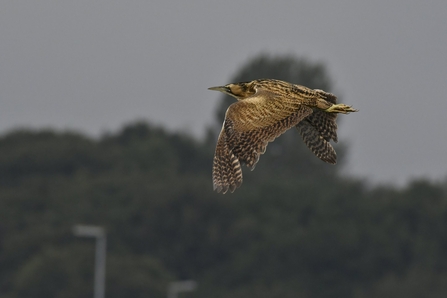
Bittern in flight by Paul Lambert
Brockholes
Butterflies were fluttering around Brockholes Nature Reserve even towards the very end of the month. Comma, red admiral, speckled wood, common blue and small copper butterflies delighted visitors with their flashes of red, orange and blue. Dragonflies, too, continued putting on a show; hunting over Brockholes’ lakes and drawing in hungry hobbies. Brown hawker, southern hawker and migrant hawker dragonflies formed most of the records, as well as common darters, which can be seen as late as November!
As beautiful autumn colours were reflected in the water around Brockholes Nature Reserve, the sounds of summer still drifted down from the trees: chiffchaffs and blackcaps occasionally bursting into song. Large flocks of meadow pipits tinkled overhead and we were delighted to spot our resident (and very early) winter bittern enjoying life on Number One Pit. Paul Lambert was lucky enough to capture it in flight.
Boilton Wood seemed to give birth to new fungi every day, with turkeytail, earthballs and the spooky-looking dead man’s fingers being September highlights.
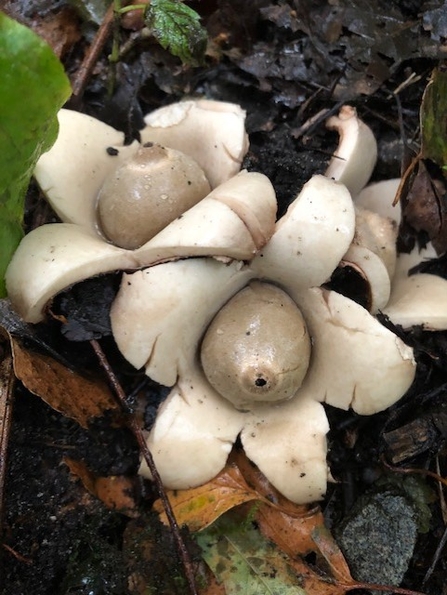
Collared earthstar at Mere Sands Wood by Joanne Wilks
Mere Sands Wood
Brockholes wasn’t the only place where dragonflies still ruled the skies in September. Migrant hawkers and common darters were also recorded at Mere Sands Wood near Ormskirk.
Mere Sands Wood is also one of the best places in Lancashire to see fungi, and given the combination of rain and warm temperatures last month, September was no exception. We loved seeing visitors’ pictures of common earthballs, turkeytail, stump puffballs and the incredible collared earthstar. The spore sac of this fungus hides inside a fleshy, bulb-shaped fruiting body which splits into a number of ‘rays’ when mature. These curl back to reveal the spore sac at their base, forming the shape of a star.
Upper Coldwell Reservoir
A lot of our conservation work has been thrown into turmoil during the COVID-19 pandemic, so we were delighted when we were still able to carry out our annual grass of Parnassus count at Upper Coldwell Reservoir. Whilst staying safe and socially distant, a small group of staff and volunteers counted 426 flower heads. Sadly this is much smaller than last year’s count of 1,096, so we’ll be looking at what might have caused the reduction in these rare plants.
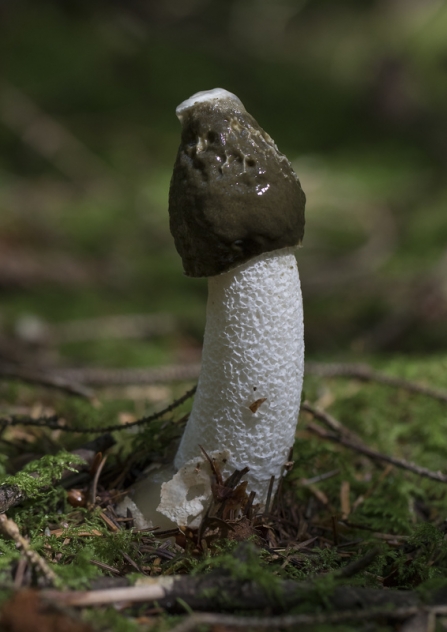
Common stinkhorn by Chris Lawrence
Moor Piece
A couple of volunteers who were helping to empty nest boxes at Moor Piece nature reserve in Clitheroe hit the fungi jackpot in September. As always, their prize was smelled before it was seen – we are, of course, talking about the common stinkhorn.
This bizarre mushroom has evolved to smell like rotting flesh in order to attract flies. When the flies land on its tip, which is covered in a sticky goop containing its spores, they pick up the spores on their body and unwittingly carry them off, spreading them elsewhere and helping the stinkhorn to reproduce. As for why this fungus evolved to look quite so phallic (it’s Latin name is even Phallus impudicus), we don’t know, but it definitely makes a sighting one of the highlights of our year.
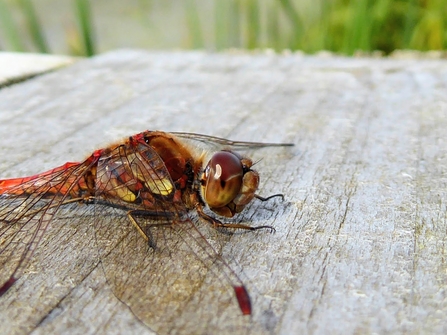
Common darter by Kevin Eaves
Heysham Nature Reserve
Nestled on the north Lancashire coast, Heysham Nature Reserve really comes into its own at this time of year. Its prime location by the sea makes it a fantastic spot to watch for migrating birds – we’ve even recorded some rarities there.
September was still a prime month to spot our favourite summer migrants. Whitethroats, lesser whitethroats, blackcaps and garden warblers were all recorded by volunteers from Heysham Bird Observatory, while we heard willow warblers and chiffchaffs singing from time to time. Add in plenty of common darter dragonflies sunning themselves on fence posts and you could have been stood in the middle of the August heatwave again.
Middleton Nature Reserve
While it still felt like summer was in full swing at Heysham Nature Reserve, nearby Middleton Nature Reserve took on a distinctly autumn feel.
Numbers of gadwall and tufted ducks were noticeably larger than previous weeks, the first migrating song thrush was recorded flying overhead on 18 September, and on 27 September five whooper swans passed over the reserve – our first records for autumn.
That being said, there were still plenty of insects to spot at Middleton Nature Reserve in September, including:
- Common darter dragonfly
- Migrant hawker dragonfly
- Brown hawker dragonfly
- Speckled wood butterfly
- Small white butterfly
- Small tortoiseshell butterfly
- Red admiral butterfly
- Comma butterfly
- Meadow brown butterfly
Perhaps the most surprising sighting of all, however, was a juvenile spotted flycatcher making the most of a glut of midges and mosquitos.
Heysham harbour
Heysham harbour remains one of the best places in our region to spot seabirds, wading birds and migratory birds. The number of birds using the heliport roost in particular seemed to grow each day in September, with top counts including:
- 87 turnstone
- 3,100 oystercatcher
- 364 redshank
- Four lapwing
- 1,750 knot
- Three dunlin
- One grey plover
Heysham skeer yielded eider ducks, curlew and redshank at low water, while Red Nab became a hotspot for everything from rock pipits, sandwich terns and kingfishers to a weasel hunting in the flotsam!
Ocean Edge foreshore seemed to be the place for more unusual sightings, including eight Alba wagtails and a juvenile curlew sandpiper. The sandpiper spent most of its time preening and enjoying the company of dunlin before heading out on its own.
Heysham Bird Observatory’s regular sea watches proved most exciting, however. The list just kept on getting better:
- Leach’s storm petrel
- Manx shearwater
- Gannet
- Razorbill
- Guillemot
- Sandwich tern
- Red-throated diver
- Black-throated diver
If that wasn’t enough, the team was treated to not one, but three osprey sightings: one out from Red Nab on 5 September, another from Ocean Edge on 19 September and one fishing between the outflows on 21 September. With pink-footed geese moving overhead too, there is definitely a seasonal shift occurring.
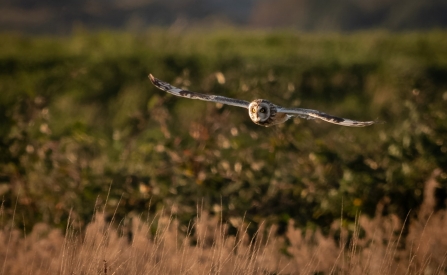
Short-eared owl in Merseyside by Steven D'Cruze
Lunt Meadows
Lunt Meadows was also a great place to watch skeins of pink-footed geese moving noisily through the sky. Huge groups started flying over the reserve in September, with smaller groups briefly touching down, and it won’t be long before the fields surrounding the reserve are brimming with these winter birds.
We had some lovely reports of toadlets and red admiral butterflies from visitors to Lunt Meadows last month, as well as marsh harriers, shovelers, a juvenile hobby and more than 200 lapwings! There’s nothing like their peeping chorus as you wander around this peaceful wildlife refuge.
Most excitingly of all, the first short-eared owl of the season was spotted on 21 September. Lunt Meadows is a fantastic place to watch these incredible hunters in action and we can’t wait to see more shorties arrive back on the reserve over the coming weeks.
What have you spotted on our nature reserves? We’d love to know! Get in touch by clicking one of the buttons below and connecting with us on Facebook, Twitter or Instagram.

